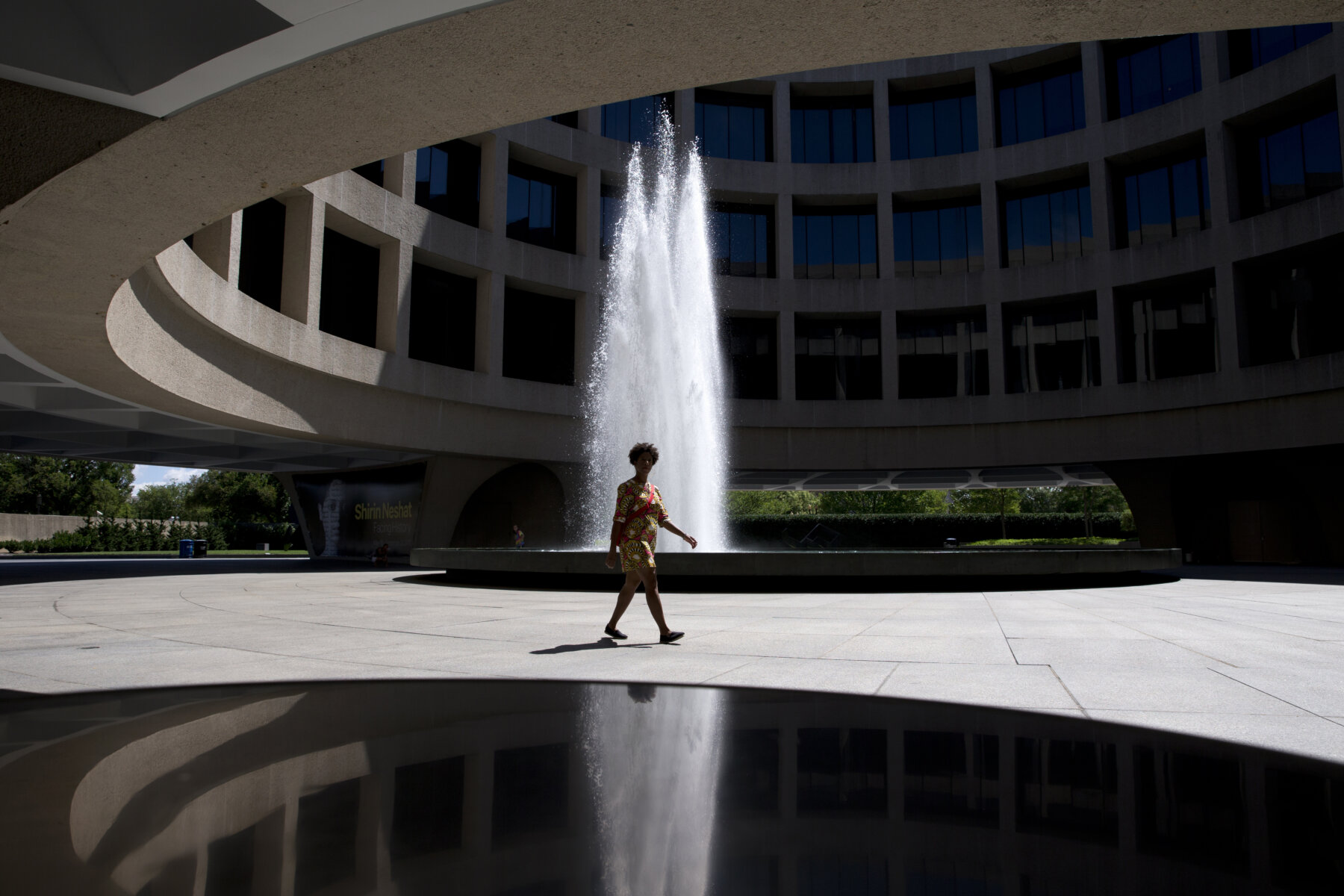
The Smithsonian museums have had to pivot to virtual programming this summer.
However, the Hirshhorn has viewed it as an opportunity for a refreshing revamp.
“It began to help us think more carefully about what we do and how we do it,” Hirshhorn director Melissa Chiu told WTOP. “In some ways, this temporary closure prompted us to be able to reach out to visitors that go beyond the city of Washington.”
Initially, it began by commissioning artists to record “Hirshhorn Artist Diaries.”
“That was a really interesting chronicle of that first few weeks and months of us all living in quarantine,” Chiu said. “It was, for many artists, a very solitary experience, so we were able to share a number of those videos. Right now, we’ve published 39 [and] we’ve decided to continue the series knowing that we’re not out of the woods yet.”
Monday, it will officially reopen its Sculpture Garden with two brand new works. Huma Bhabha has created a giant female figure out of bronze paint called “We Come in Peace,” while Sterling Ruby has created two large candles called “Double Candle.”
“We’re very excited to be able to share with you these two brand new sculptures,” Chiu said. “The thinking behind it is that outdoors social distancing is probably easier than inside our museum with the architecture that we have, so the Sculpture Garden is an ideal place to be able to go and experience art at this moment in time.”
It’s also hosting a free virtual speaker series “Talking to Our Time” every Wednesday.
“The idea was could we allow our visitors to connect to others and hear from them about what they’re thinking and what they’re making at this time, while also looking back at some of the previous artworks that we’ve done,” Chiu said. “We really just wanted to be able to connect those who are interested in art with the artists.”
The series continues this Wednesday, Aug. 12 with the versatile Paul Chan.
“The subject is art and the screen age,” Chiu said. “They’re going to be talking about an evolving approach to the moving image. He has done all sorts of works with installation art, video art and is really one of the most incisive thinkers on technology.”
Next Wednesday, Aug. 19 brings the duo of A.A. Bronson and Adrian Stimson.
“It will be on the subject of art and healing,” Chiu said. “This is a tough moment for a lot of folks and these are two artists who have in their past works really addressed some unspeakable atrocities. … They’ve looked at rebuilding relationships and trust and really proposing through art ways to heal and move forward together.”
The penultimate chat Aug. 26 brings artist and filmmaker Doug Aitken, who recently created a 360-degree video projection exhibit around the museum exterior.
“It’s one of those moments that will go down in Hirshhorn history,” Chiu said. “We had folks gathering on the National Mall, we had marriage proposals in front of this work. … [He’ll discuss] how his practice defies genres and reimagines an idea of participation.”
The series wraps Sept. 2 with historian Paul Farber and photographer Ken Lum about their independent art and history studio Monument Lab, dissecting collective memory.
“This is a really pertinent issue at this moment in time when there is such an active public conversation about monuments, especially around the Civil War,” Chiu said. “I’m also thinking of another work that we have on display … called ‘Pickett’s Charge’ that’s all about the history of the Civil War from the perspective of being a black artist.”
You can also visit the Hirshhorn’s YouTube channel to watch previous talks with Alfredo Jaar, Senga Nengudi with Maren Hassinger, and Aliza Nisenbaum.
Through it all, the Hirshhorn hopes it has expanded its reach during the pandemic.
“Our [virtual] guests are sometimes even more than the capacity of our physical auditorium at the museum — that’s a good thing,” Chiu said. “We have visitors from as far away as India and Australia who tune in to these talks, so we feel like it’s actually a much greater accessibility to what we’re doing than we would have ordinarily.”








